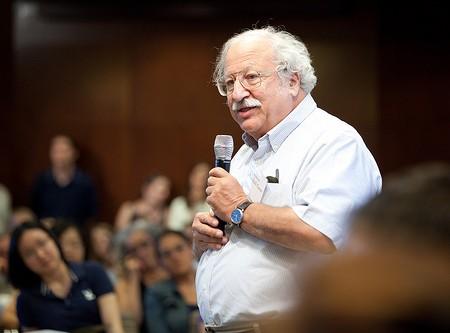
Marshall Ganz is a lecturer in public policy at the Kennedy School of Government, Harvard University.
Posts By This Author
Why Stories Matter
The art and craft of social change.

rawpixel / Shutterstock
I grew up in Bakersfield, California, where my father was a rabbi and my mother was a teacher. I went to Harvard in 1960, in part because it was about as far as I could get from Bakersfield, which was the terminus of the dust bowl migration that John Steinbeck made famous in The Grapes of Wrath.
I got my real education, however, when I left Harvard to work in the civil rights movement in Mississippi. I went to Mississippi because, among other things, my father had served as an Army chaplain in Germany right after World War II. His work was with Holocaust survivors, and as a child the Holocaust became a reality in our home. The Holocaust was interpreted to me as a consequence of racism, that racism is an evil, that racism kills. I made a choice to go to Mississippi.
I also was raised on years of Passover Seders. There’s a part in the Passover Seder when they point to the kids and say, “You were a slave in Egypt.” I finally realized the point was to recognize that we were all slaves in Egypt and in our time that same struggle from slavery to freedom is always going on, that you have to choose where you stand in that. The civil rights movement was clearly about that struggle. It was in Mississippi that I learned to be an organizer and about movement-building.
I went to Mississippi because it was a movement of young people, and there’s something very particular about young people, not just that they have time. Walter Brueggemann writes in The Prophetic Imagination about the two elements of prophetic vision. One is criticality, recognition of the world’s pain. Second is hope, recognition of the world’s possibilities. Young people come of age with a critical eye and a hopeful heart. It’s that combination of critical eye and hopeful heart that brings change. That’s one reason why so many young people were and are involved in movements for social change.
Video of Marshall Ganz
Marshall Ganz, a lecturer on public policy at the Kennedy School of Government at Harvard University, shares the importance of narrative in initiating social change during a presentation at Sojourn